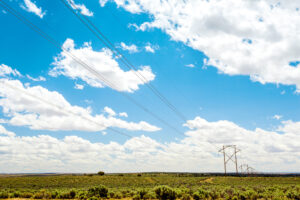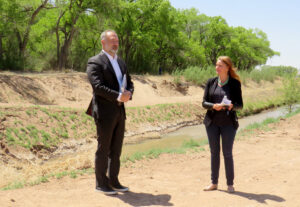Monsoon rains help reservoir levels, but won’t end drought in New Mexico

Monsoon rains have brought a small amount of welcome relief to dwindling reservoirs in New Mexico but drought conditions will continue to impact the state, according to the U.S. Bureau of Reclamation’s Albuquerque Area Office.
The BOR had projected that Elephant Butte Reservoir, located near Truth or Consequences, could drop to 1 percent full. But the BOR now projects that the season will end with 97,000 acre-feet of water in Elephant Butte, or 4 percent full.
“Our projections are based on the expected snowpack runoff and the expected demand from downstream users. In a year like this, we didn’t have much of a spring runoff,” said Albuquerque Area Office Manager Jennifer Faler in a press release. “However, it started raining in late June and the storms continued steadily through July and into August. The monsoon rains are notoriously difficult to predict, so we used conservative but realistic monsoon estimates in our models early this year. They’ve proved to be a big help with water levels this summer.”
In addition to the increased inflow from the Rio Grande, the levels in Elephant Butte also benefited from decreased demand for water by irrigators in southern New Mexico and Texas. The Elephant Butte Irrigation District ended the irrigation season in June after a single month, leaving farmers and ranchers to rely on groundwater.
And Elephant Butte is not the only reservoir that has benefited from the monsoon storms.
Santa Rosa Reservoir, which is located on the Pecos River, saw a fourfold increase in water levels—going from 3,500 acre-feet to 14,200 acre-feet, according to the BOR.
In the northern part of the state, Navajo Lake is at about 60 percent capacity. The reservoir levels have dropped in the last month as more water is released from Navajo Lake than flows into it on most days. However, it did see spikes in inflow, including on July 27 when it went from 759 cubic feet per second entering the lake to 1,739 cubic feet per second. On July 27, the BOR only released 425 cubic feet per second from the reservoir. The San Juan River Recovery Implementation Program requires the BOR to release water to maintain an average flow of at least 500 cubic feet per second in the stretch from Farmington to Lake Powell.
Susan Behery, a hydraulic engineer for the BOR’s Western Colorado Area Office, said there will be two releases of 10,000 acre-feet each in November and December. These releases are part of the Upper Basin Drought Response Operations Agreement for the Colorado River. Behery said the full details of the releases have not been worked out, but she anticipates the first release will occur in late November. In addition to fulfilling the obligations under the drought response operations agreement, Behery said the releases will help clear out sediment that has washed into the San Juan River during the monsoon season.
But, while reservoir levels are improving, the BOR is warning people that drought conditions are not over. In a press release, the BOR’s Albuquerque Area Office states that the drought conditions have been impacting New Mexico for two decades and won’t be ended by a couple of months of good monsoon moisture.
According to the U.S. Drought Monitor, about 87 percent of the state is abnormally dry and about 79 percent is experiencing moderate drought. A portion of New Mexico in the northwest, including Farmington, as well as an area west of Santa Fe are in exceptional drought, which is the highest level of drought on the drought monitor’s five-category system.
This article was originally posted on Monsoon rains help reservoir levels, but won’t end drought in New Mexico







